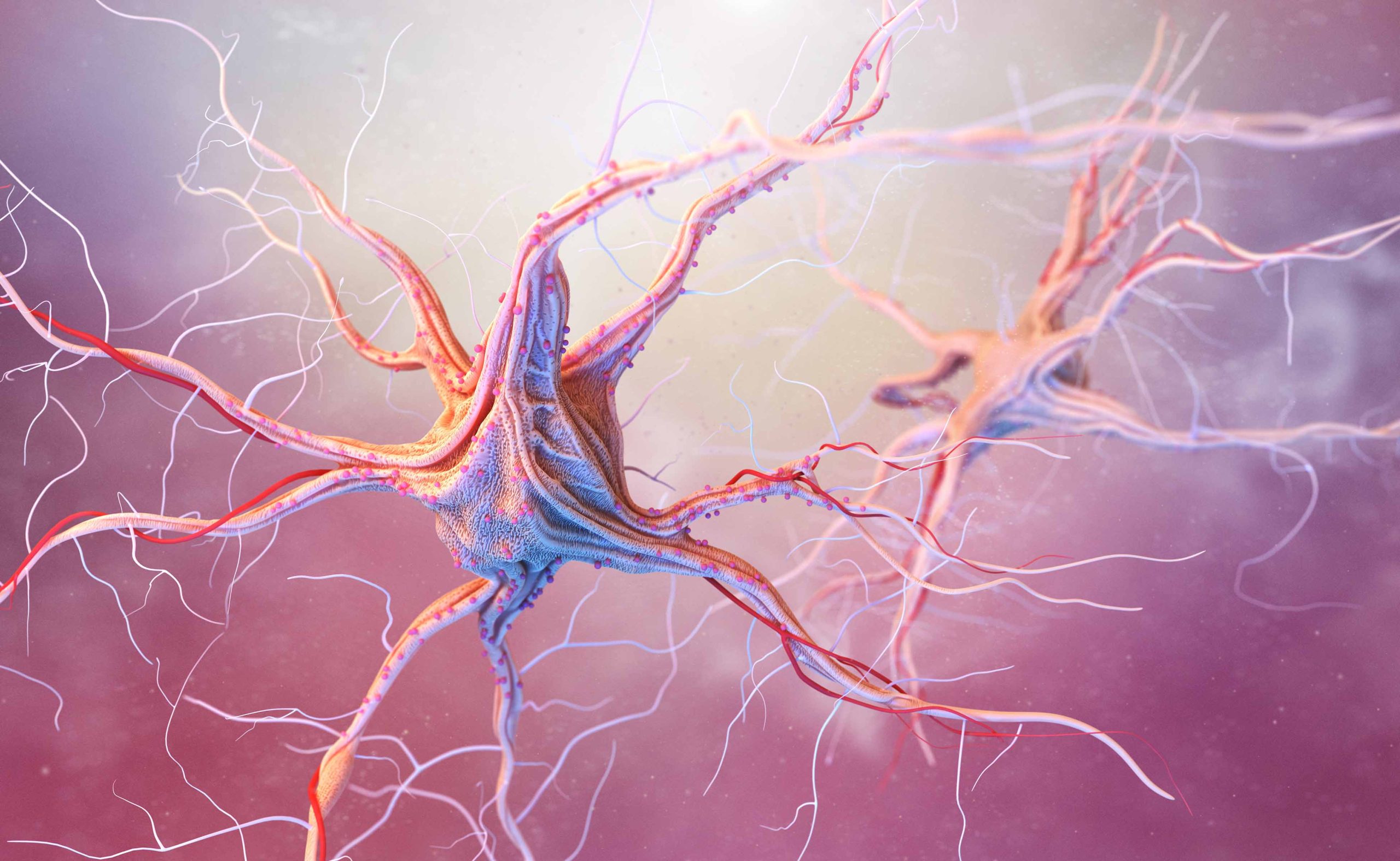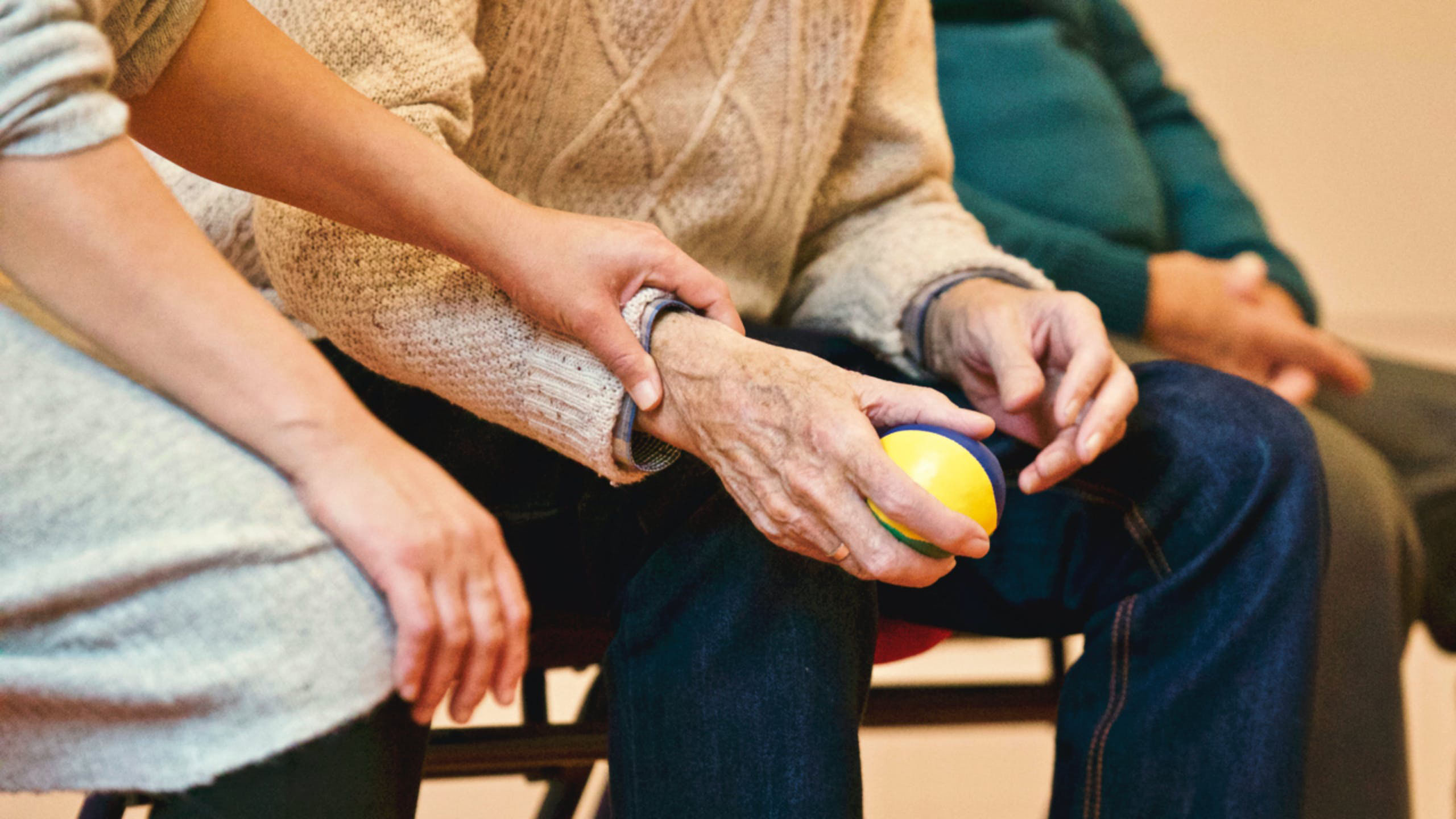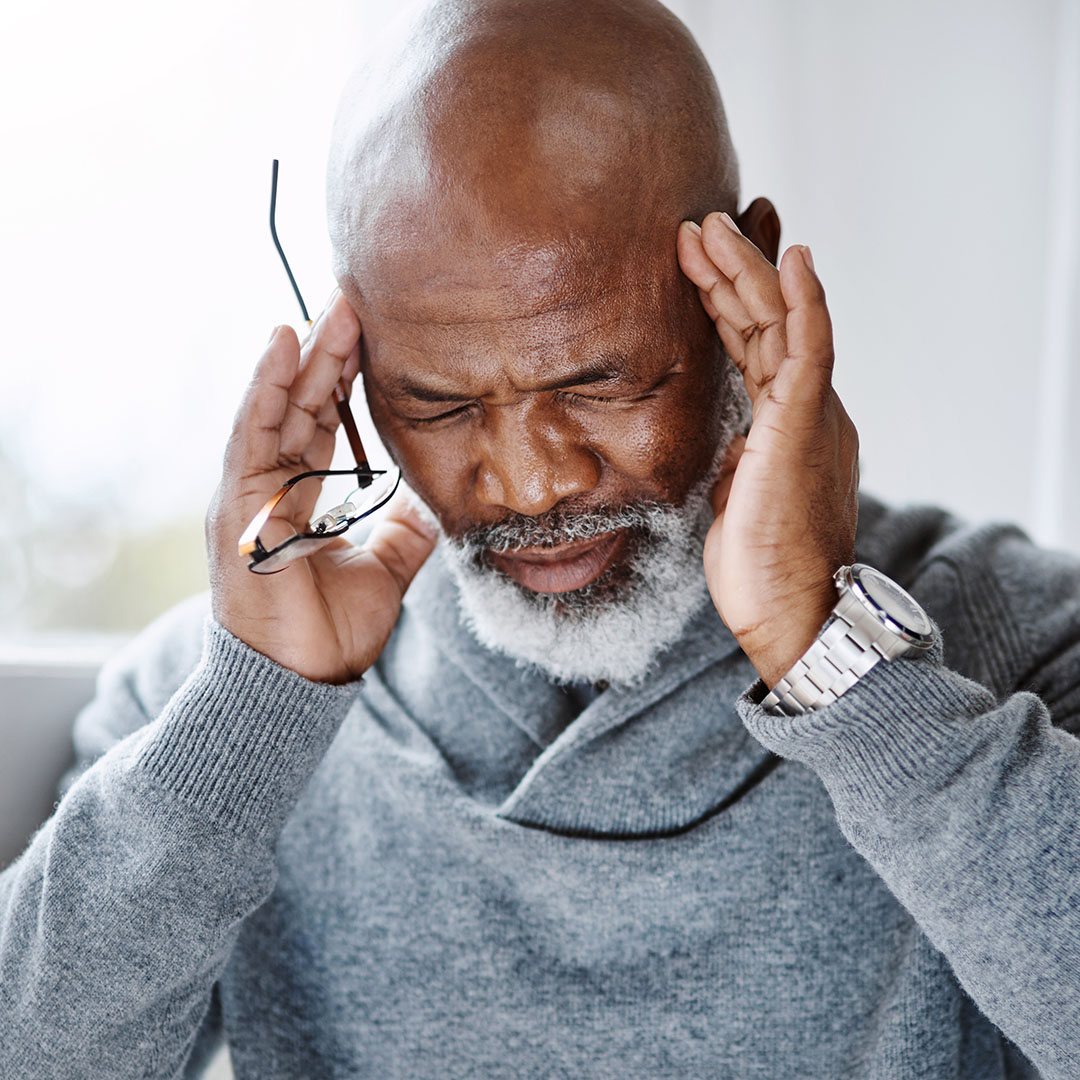The Connection Between Gut Microbiota and Mental Health
In my practice, more and more patients are asking about the relationship between digestive health and mental well-being. This growing interest is no surprise, as recent scientific findings have revealed an astonishing connection between the gut and the brain. Known as the microbiota-gut-brain axis, this interaction is reshaping how we approach mental health. Although at first glance the digestive and nervous systems seem unrelated, recent research has shown that the state of our gut microbiota can influence our mental health. This discovery opens new avenues for treating disorders like anxiety, depression, and neurodegenerative diseases. I find it particularly interesting how this knowledge could shape treatment strategies, especially as dietary and lifestyle changes are increasingly viewed as potential therapeutic tools for improving mental and brain health.
What is Microbiota and How Does It Affect Our Health?
To explore this topic, I’m first going to explain some key concepts:
- Microbiota: It refers to the population of microorganisms, like bacteria, viruses, and fungi that naturally live in various parts of the body.
- Gut microbiota: It’s the population of microorganisms that live in our intestine. Some are beneficial, others can be harmful, and others cause neither harm nor benefit. It is the most diverse and numerous microbial ecosystem in the body. It performs essential functions, such as regulating the immune system and maintaining the body’s internal balance.
- Intestinal barrier: Think of it as a protective wall lining the intestines. It controls what enters the bloodstream and what doesn’t, allowing nutrients to pass while blocking harmful bacteria and toxins.
- Blood-brain barrier: A similar protective barrier, but this one safeguards the brain, ensuring harmful substances circulating in the blood don't reach it while still allowing essential nutrients and oxygen to pass through.
- Immune system: It’s the body’s defense system. It functions like an army, identifying and attacking invaders to prevent illness.
- Hormones: These are chemical signals that travel through our bloodstream, regulating key functions in our body like growth, metabolism, mood, and how we respond to stress. They act as messengers, telling our organs and tissues when to act and how to function at the right time.
- Hypothalamic-pituitary-adrenal axis: It’s a hormonal communication system that connects the hypothalamus (a part of the brain), the pituitary gland (a gland at the base of the brain), and the adrenal glands (located just above the kidneys). This system regulates the production of cortisol, the stress hormone. When we are under stress, this axis is activated and more cortisol is produced to help us cope with the situation.
- Enteric nervous system: Often referred to as our "second brain," this network of nerves controls vital functions in our gut, like the movement of food and secretion of digestive substances. It can function independently, though it's also connected to the brain via the vagus nerve, forming a bridge between the gut and the brain.
- Neurotransmitters: These are chemical substances that act as messengers, transmitting signals from one neuron to another or from a neuron to a muscle or gland cell. They are essential for coordinating physiological and emotional functions in the body and brain.

Microbiota-gut-brain Axis
Scientific research suggests that the gut microbiota plays a significant role in regulating emotions and brain health through continuous communication between the digestive system and the brain. This ongoing interaction occurs through several pathways, including:
- Vagus nerve: This nerve carries signals both from the brain to the gut and vice versa. It allows the brain to receive information about the state of the gut and, in turn, influences its functioning, affecting digestion, intestinal movements, and nutrient absorption.
- Immune system: Our gut microbiota influences the production of cytokines, molecules that regulate inflammation. Chronic inflammation in the gut may contribute to symptoms of depression and anxiety.
- Neurotransmitters: The gut microbiota is involved in producing critical neurotransmitters like serotonin, GABA, and dopamine, which play a key role in regulating mood and mental health. What’s particularly striking is that nearly 90% of serotonin is produced in the gut, which emphasizes just how important gut health is for emotional well-being.
- Hormones: When we go through stress, the hypothalamic-pituitary-adrenal axis activates and increases cortisol production. This hormone can disrupt gut bacteria and alter digestive rhythms.
- Short-chain fatty acids: Certain gut bacteria produce short-chain fatty acids when fermenting fiber. These compounds can travel through the bloodstream, cross the blood-brain barrier, and play a role in regulating inflammation in the brain.
Dysbiosis and Factors Affecting Gut Microbiota
Dysbiosis occurs when beneficial bacteria decrease and/or harmful bacteria increase in the gut. Disruption of microbiota balance is linked to different factors: inadequate diet (high in fats and sugars, low in fiber), overuse of antibiotics, inflammatory bowel diseases, metabolic diseases, obesity, lack of sleep, substance use, intestinal infections, sedentary lifestyle, aging, certain genetic factors, and chronic stress.

Consequences of Chronic Stress on the Microbiota-gut-brain Axis
Under stress, the body releases cortisol through the hypothalamic-pituitary-adrenal axis. While this is a natural response to short-term to cope with demanding situations, prolonged stress can disrupt the balance of the gut microbiota and affect mental health. In my experience, this can lead to a cycle where poor gut health contributes to mental health issues, such as anxiety or depression, which, in turn, can worsen gut complaints.
Chronic stress can:
- Decrease the diversity of microorganisms in the gut, leading to dysbiosis.
- Alter the intestinal barrier: When the balance of the microbiota is disturbed, the intestinal barrier can become more permeable, allowing toxins and other harmful substances to enter the body.
- Cause chronic inflammation: Dysbiosis can increase inflammation and contribute to mental disorders like depression and anxiety.
- Alter neurotransmitter production: Some gut bacteria play a key role in the production of neurotransmitters like serotonin, GABA, and dopamine. An imbalance in the production of these neurotransmitters can impact mental health and nervous system well-being.
- Alter gut rhythm: Causing digestive issues such as diarrhea, chronic constipation, or other functional gastrointestinal disorders.
- Reduce the availability of nutrients to the brain.
Strategies to Improve Gut and Mental Health
1. Balanced diet:
I always recommend a diet rich in fiber, fresh foods, and fermented items, as they promote a healthy gut microbiota and, consequently, a better mental health.
- Prebiotics: These foods feed beneficial gut bacteria and are essential for maintaining balance in the gut microbiota. I suggest that patients include more fruits, vegetables, legumes, and whole grains in their diet.
- Probiotics: Probiotics are live microorganisms that, when consumed in sufficient quantities, help restore balance to the gut microbiota. They are found in fermented foods like yogurt, kefir, kombucha, and kimchi. Other sources of probiotics include apple cider vinegar, natural cider, sourdough bread, and certain aged or blue cheeses. Probiotics contribute to maintaining a healthy digestive system and strengthening the immune system.
- Healthy fats: Healthy fats, particularly those rich in omega-3, have been shown to improve the diversity of gut bacteria, reduce inflammation, and strengthen the intestinal barrier, creating a more favorable environment for beneficial bacteria. I recommend including sources of healthy fats in the diet, such as olive oil, avocados, nuts, and fatty fish, as these can support both gut health and overall well-being.
- Polyphenol-rich foods: Polyphenols, found in fruits, green tea, cocoa, and berries, serve as prebiotics and offer powerful antioxidant properties that help reduce cellular damage in the gut.
2. Physical exercise
Regular exercise is one of the most effective ways to reduce stress, improve blood circulation, and support the gut microbiota. Moderate physical activity not only helps enhance the diversity of beneficial gut bacteria but also has a direct positive impact on mood and mental health. It’s something I always recommend to my patients as part of a holistic approach to well-being.
3. Stress management
Techniques such as mindfulness, meditation, deep breathing, and yoga can help calm the mind and reduce stress levels, which in turn supports the health of the gut microbiota. Taking time each day for these practices can lead to long-term improvements in both mental and physical health.
4. Adequate rest
Proper rest and sleep are essential for mental health. Sleep allows the body to regenerate and repair, not just the digestive and nervous systems, but also the delicate balance of the gut microbiota. I often remind my patients of the importance of good sleep habits, as they play a significant role in overall well-being and support the health of both the gut and mind.

Current scientific evidence supports the idea that mental health and brain well-being are influenced by the gut microbiota through the microbiota-gut-brain axis. Factors such as a balanced diet, physical exercise, stress management, and adequate rest are essential to maintain microbiota balance and, therefore, support mental health. Since more than 25% of adults in Spain suffer from some form of mental health disorder, understanding and caring for our microbiota could be a key tool for preventing and potentially helping treating these conditions. The encouraging results we’ve seen so far in research hold promise, and I look forward to future developments that may offer new ways to improve both mental and brain health.
About the author
María Isabel Zamora is a physician with a double specialty in Psychiatry and Neurology. She has experience in the care of patients in general psychiatry consultations, and in a more specialized way, in the care of patients who combine psychiatric and neurological symptoms. She has worked with psychogeriatric patients and patients with functional diversity. She has experience in cognitive impairment, psychological and behavioral symptoms of dementia, psychiatric symptoms related to neurological disorders or chronic pain, autism, ADHD, adaptive disorders, depression, anxiety, addictions, bipolar disorder, obsessive-compulsive disorder, sleep disorders, eating disorders, etc.
Division of Medicine
Psychiatrist
Adults and adolescents
Languages: English, French and Spanish
Relationship between Migraine and Mental Health
Migraine goes beyond being simply a headache; it is a complex neurological disease that frequently accompanies symptoms related to mental health. It affects more than 5 million people in Spain. Additionally, approximately 1.5 million Spaniards suffer from chronic migraine, characterized by occurring 15 or more days per month. Chronic migraine significantly reduces productivity, deteriorates quality of life, and leads to disability rates four to six times higher than those with episodic migraine. Despite its neurological origin, migraine often coexists with various psychiatric disorders such as depression, anxiety disorders, insomnia, bipolar disorder, etc., complicating its management and treatment. These mental health issues not only exacerbate the burden of migraine symptoms but also increase the risk of increased frequency and treatment resistance over time.
Depression and Migraine
Many migraine patients face not only severe headaches but also persistent feelings of sadness and hopelessness. Depression affects a significant number of migraine individuals, impacting their quality of life and making pain management difficult. The relationship between depression and migraine is especially strong in cases of chronic migraine, where both conditions often worsen each other’s symptoms. Symptoms such as persistent sadness, loss of interest in activities, changes in appetite or weight, sleep disturbances, and difficulty concentrating can complicate migraine management. Treating depression with a combination of medication and psychotherapy can help improve overall mood and resilience, thus facilitating coping with the challenges posed by migraine. At Sinews MTI, a team of psychiatry and psychology professionals is available to offer assistance.
Anxiety Disorders and Migraine
Anxiety disorders, such as generalized anxiety disorder, obsessive-compulsive disorder, and panic disorder, are also common among migraine patients. Moreover, stress and uncertainty of living with migraines can intensify anxiety symptoms, creating a cycle where anxiety triggers migraines and, in turn, migraines increase anxiety. This cycle can make managing both migraine and anxiety challenging, perpetuating and worsening both conditions.
Symptoms such as excessive worry, restlessness, muscle tension, and sleep difficulties can significantly impact the migraine experience. Therapeutic approaches like cognitive-behavioral therapy (CBT) are effective in managing anxiety symptoms, thereby alleviating their impact on migraine frequency and severity.

The Role of Stress in Migraine
Stress activates the hypothalamic-pituitary-adrenal (HPA) axis, a regulatory system that controls the body’s response to stress. When a person experiences stress, whether emotional, physical, or psychological, the hypothalamus releases the CRH hormone (corticotropin-releasing hormone), which stimulates the pituitary gland to release ACTH (adrenocorticotropic hormone). This in turn acts on the adrenal glands to produce cortisol, essential for regulating the stress response. Cortisol is crucial for various bodily functions, including pain response. However, elevated and chronic levels of cortisol due to prolonged stress can have long-term negative consequences on health and contribute to pain sensitization.
Stress significantly affects health and migraines. Studies indicate that patients with chronic migraines report more stressful events preceding the chronification of their migraines compared to those with episodic migraines. Chronic stress and recurrent migraines can trigger structural changes in the central nervous system, increasing sensitivity to pain. Pain sensitization involves an enhanced response of the nervous system to painful stimuli. Functional magnetic resonance imaging studies have shown increased brain activation in response to pain in individuals with chronic migraines. Paradoxically, sudden reduction in stress can also increase the risk of migraine the following day, due to the abrupt reversal of stress-induced anti-inflammatory effects that alleviate pain.
Stress also influences psychiatric disorders; stressful or traumatic events, especially in childhood, increase vulnerability to major depression and other mental disorders. Chronic stress can induce genetic/epigenetic changes that alter the response to future stressors, thereby increasing susceptibility to migraines and psychiatric disorders. In the context of migraines, chronic stress may not only trigger episodes of acute pain but also contribute to pain chronification and heightened sensitivity to migraine triggers. Activation of the HPA axis and the resulting increase in cortisol levels may perpetuate chronic migraines and amplify pain perception in patients. Effectively managing stress not only prevents migraines but also improves overall physical and mental health. Consult with our neuropsychiatrist for guidance on your case.
Bipolar Disorder and Migraine
There is a bidirectional relationship between migraine and bipolar disorder, especially migraine with aura. Approximately one-third of patients with bipolar disorder have migraines, with a higher prevalence in bipolar disorder type II. Both conditions share an episodic nature, sensitivity to stress, and family history, potentially linked through dysfunctions in calcium channels. Bipolar disorder, characterized by alternating periods of depression and mania or hypomania, can complicate migraine management. Mood instability associated with bipolar disorder can exacerbate the frequency and severity of migraines. Effective management of bipolar disorder through mood stabilizers, antipsychotic medications, and psychotherapy can help reduce migraine episodes and improve overall stability.

Sleep Disorders and Migraine
Sleep disorders are frequently reported by patients with migraines and are both a trigger and a consequence of migraines. Conditions such as insomnia, sleep apnea, and restless leg syndrome are common among migraine patients. Poor sleep quality can increase the frequency and severity of migraines, creating a vicious cycle that is difficult to break. Managing sleep disorders can lead to significant improvements in migraine symptoms. Improving sleep hygiene through regular sleep schedules, creating a suitable rest environment, and avoiding stimulants before bedtime can help reduce migraine frequency. For conditions such as sleep apnea, medical interventions such as continuous positive airway pressure (CPAP) therapy may be necessary to improve both sleep quality and migraine management.
Substance Abuse and Migraine
While previous studies suggested a relationship between migraines and substance abuse, recent research indicates that this association may be confounded by factors such as depression and other psychiatric disorders. For example, patients with migraines tend to consume less alcohol, possibly due to its potential to trigger headaches.
However, abuse of other substances such as medications used to treat migraines can be a concern. Excessive use of medications, particularly analgesics, can lead to medication overuse headache, which worsens the frequency and intensity of the headaches. Addressing substance abuse issues through proper medical guidance, counseling, and support groups is critical for effective migraine management. Get advice on substance abuse from our psychiatry team.
Relationship between Mental Health and Progression of Migraine to Chronic Form
Chronic migraine often evolves from episodic migraine and is linked to various risk factors such as depression, anxiety, obesity, and excessive medication use. Depression is especially important and increases the risk of chronic migraine. Effectively treating these psychiatric conditions can prevent migraine from worsening. It is crucial to adopt treatment approaches that consider both neurological and psychiatric aspects to improve quality of life.
Theories on Neurobiological Mechanisms
Several hypotheses attempt to explain the bidirectional relationship between migraine and psychiatric disorders. These include shared genetic factors, common environmental triggers, and dysfunctions in systems such as serotonin regulation and the hypothalamic-pituitary-adrenal axis. Chronic stress and central sensitization are proposed mechanisms linking migraines to conditions such as depression and anxiety. Understanding these mechanisms can guide the development of targeted therapies that address both migraine and its psychiatric comorbidities.

Contributions of Functional Imaging Studies
Neuroimaging studies highlight abnormal brain function and connectivity in areas involved in emotional processing among migraine patients. Regions such as the anterior cingulate cortex, insula, and prefrontal cortex show altered activity patterns during pain and sensory processing, potentially contributing to the emotional aspects of migraines and comorbid psychiatric symptoms. These insights from brain imaging research underscore the importance of a comprehensive approach in migraine treatment that considers both neurological and psychological factors. By addressing the brain’s role in both pain and emotion, more effective and holistic treatment plans can be developed.
Hope through Treatment
Despite the challenges, there are effective treatment options that can help manage both migraines and associated mental health problems. Initially, primary care physicians are the first point of contact for patients with migraines and typically prescribe pain relief medication for acute episodes. When primary care physicians deem it necessary for specialist intervention, patients are referred to neurologists, who are responsible for evaluating and managing specific migraine treatments.
For acute migraine attacks, pain relievers such as ibuprofen and triptans are effective options for quick and efficient pain relief. Additionally, depending on the frequency and severity of migraines, neurologists may recommend preventive pharmacological treatments such as beta-blockers (e.g., propranolol), antidepressants (such as amitriptyline), and antiepileptics (like valproic acid and topiramate). In cases where these treatments are insufficient or poorly tolerated, newer pharmacological approaches have been developed, such as monoclonal antibodies targeting calcitonin gene-related peptide (CGRP), which have shown high effectiveness in migraine prevention by significantly reducing the frequency and severity of episodes.
Furthermore, when treatment response is unsatisfactory, a psychiatric evaluation is crucial. This allows for the detection of psychiatric comorbidities that may contribute to poor treatment response or migraine chronification. Psychiatrists can identify and treat conditions such as anxiety disorders, depression, or other emotional issues that might impact the frequency and severity of migraines, using medication when necessary. At Sinews MTI, we have psychiatrists who will help you address psychiatric comorbidities.
In addition, behavioral therapies play a crucial role in the comprehensive treatment of migraines and their associated complications. These interventions, guided by specialized psychologists, use techniques such as cognitive-behavioral therapy (CBT) and stress management strategies to develop effective coping skills. Seek help from our psychologists.
This combination of treatments not only addresses the physical aspects of migraines but also focuses on psychiatric and psychological aspects, thereby improving the quality of life for patients.

In conclusion, migraine is a neurological condition that profoundly impacts the productivity and quality of life of millions of individuals. Despite its neurological basis, migraine often coexists with a spectrum of psychiatric comorbidities including depression, bipolar disorder, anxiety disorders, stress, sleep disorders, and substance abuse. These conditions not only increase healthcare utilization but also elevate the risk of migraine chronification and worsen overall disability.
Effective management of these psychiatric comorbidities is crucial to optimize migraine treatment outcomes and enhance the quality of life for affected individuals. Psychiatrists play a pivotal role in this context, employing a biopsychosocial approach to address the biological, psychological, and social dimensions of migraine comorbidities.
Adapting treatment approaches that integrate pharmacological and behavioral therapies is imperative, especially for patients with psychiatric comorbidities, to ensure comprehensive and personalized care in migraine management.
About the author
María Isabel Zamora is a physician with a double specialty in Psychiatry and Neurology. She has experience in the care of patients in general psychiatry consultations, and in a more specialized way, in the care of patients who combine psychiatric and neurological symptoms. She has worked with psychogeriatric patients and patients with functional diversity. She has experience in cognitive impairment, psychological and behavioral symptoms of dementia, psychiatric symptoms related to neurological disorders or chronic pain, autism, ADHD, adaptive disorders, depression, anxiety, addictions, bipolar disorder, obsessive-compulsive disorder, sleep disorders, eating disorders, etc.
Division of Medicine
Psychiatrist
Adults and adolescents
Languages: English, French and Spanish
What is caregiver burnout or burnout syndrome?
The primary caregivers of individuals with dementia assume demanding roles, burdened with crucial responsibilities for the patients’ well-being. Confronting fluctuations in the conditions of the individuals under care and grappling with the complexity of managing disruptive behaviors, the caregivers find themselves in positions of immense responsibility. The ability to address evolving needs and challenging behaviors becomes an indispensable facet of their daily lives. However, these responsibilities often lead to significant levels of stress and exhaustion. Recognizing and addressing these demands is essential, not only for preserving the health and resilience of the primary caregivers but also to ensure the quality and continuity of care provided to the dependent individuals.
Responsibilities undertaken by the primary caregivers
The primary caregivers encounter a broad spectrum of responsibilities crucial to the patients’ well-being. Besides managing difficulties and changes in the conditions of the individuals under care, extraordinary patience is called for. This challenge becomes even more intense when dealing with repetitive questions or behavioral symptoms associated with dementia. Effectively handling these intricate situations demands not only a profound understanding of the process but also resilient patience that enables the caregivers to remain composed and provide the necessary support.
Organizational skills are pivotal for managing medical appointments and handling administrative tasks, including updating documents for benefits. Furthermore, the primary caregivers must maintain optimum physical fitness to meet the physical demands of caring for increasingly dependent individuals. Practical skills such as driving and using public transportation to take patients to their appointments are also required. These responsibilities reflect capacities that are often lacking in individuals experiencing severe burnout while caring for someone with dementia.

Maintaining well-being in challenging circumstances
As dementia triggers changes in the individuals’ behavior, the caregivers’ roles become exceptionally challenging. Adapting to this new reality becomes imperative, as attempting to restore normalcy could exacerbate tensions. It is crucial to remember that the behavior of the individuals with dementia is not malevolent; it is a response to the reality they are experiencing. Dementia can distort the individuals’ perception and understanding of reality, manifesting in their behavior. Consequently, the caregivers must adopt a comprehensive perspective, recognizing that the individuals are not intentionally causing discomfort.
Evaluating the true nature of behavior is crucial, paying attention to both body language and non-verbal cues. Some actions may be expressions of emotional or social needs. For example, agitation could indicate anxiety or discomfort, while resistance to daily activities may stem from confusion or a lack of understanding. Understanding these expressions as indicators of underlying needs, rather than considering them behavioral problems per se, empowers the caregivers to address the genuine concerns of the individuals with dementia with empathy and specific attention.
Dealing with challenging behaviors involves accepting and adapting to the current situation. Although frustration and irritation are natural responses, taking a step back and allowing time for emotional recovery is crucial. It is fundamental to avoid accumulating resentment, and it is important to emphasize that blame should not fall on the caregivers, who are inherently in stressful situations.
What is caregiver burnout syndrome?
Caregiver Burnout Syndrome, also known as caregiver burnout, manifests when the act of caring for another person exceeds certain limits, leading to stress, physical, and psychological exhaustion. This syndrome affects those who take on the role of caregivers, progressively transforming their lives into that of the patients and taking on their problems. The constant attention to individuals with an illness or disability creates a burden that requires moments of disconnection to avoid saturation.
The responsibility of caregiving involves carrying out activities for which caregivers are often unprepared and to which they must adapt. This constant commitment can lead to caregiver syndrome, developing as caregivers take on daily tasks involving psychological and physical burdens.
The caregivers’ lives change dramatically, minimizing the time dedicated to themselves and affecting their personal, social, and professional relationships. Their mood become more sensitive and irritable, harming both the caregivers and the dependent individuals.
Burnout occurs when the caregivers deplete all their reserves, reaching a point of lack of psychological, emotional, and sometimes physical resources. They become unable to generate new energy, and short periods of rest are no longer restorative. The consequences of burnout on the caregivers’ health are significant, affecting both psychological and physical levels, and even altering their behavior and personalities.

This exhaustion can result in anxiety, depression, isolation, sleep disorders, and, above all, physical and mental fatigue. Caregivers in burnout undergo changes in behavior and may become less capable of managing their own emotions. The feeling of guilt intensifies burnout, and the caregivers face challenges ranging from heart diseases and hypertension to diabetes, depression, and an increased risk of degenerative diseases.
This burnout also impacts the dependent individuals. Caring for individuals with dementia or serious illnesses is complex, requiring attention to their difficulties, patience with repetitive questions, and good emotional management. Caregivers are expected to have memory, organization, good physical health, and, above all, motivation to face the time and energy demands of this role.
Caregivers in burnout may forget crucial information, affecting the patients’ health and complicating relationships with the home care team. Caregiver stress can result in tears, aggression, and, in extreme cases, hospitalization, leaving the dependent individuals without the necessary care. Burnout also has significant consequences in the caregivers’ personal lives, affecting family, work relationships, and, in some cases, leading to issues such as substance abuse. Exhaustion can gradually set in over months or years before reaching a point of no return, causing significant disruptions to the caregivers’ health, employment, and family relationships.
In summary, Caregiver Burnout Syndrome not only affects the health of the caregivers and the dependent individuals but also has repercussions in their personal lives and close relationships. Prevention and adequate support are essential to avoid the devastating consequences of this syndrome.
Preventing caregiver burnout syndrome
Preventing caregiver burnout syndrome involves detecting and preventing its occurrence when taking on the responsibility of caregiving. Acquiring medical skills, organizing tasks, and maintaining a social life are essential. Ensuring the well-being of the caregivers is crucial, recognizing its importance at the same level as the care provided to the individuals being cared for. Here are practical tips and reflections to avoid burnout:
- Understanding the disorder and adapting: Lack of understanding of the disease can lead to misunderstandings and tensions. Adapting to the changing needs of the loved ones becomes an essential element to preserve a harmonious and effective caregiving relationship.
- Recognizing personal boundaries and setting limits: When taking on the care of individuals with dementia, it is essential to set boundaries from the beginning. This involves addressing financial issues and uncomfortable situations, such as assisting in the personal hygiene of the individuals. Defining non-negotiable moments and activities helps manage temporary and emotional limits, while recognizing your own limitations preserves personal balance.
- Prioritizing personal well-being and health: The caregivers' health is fundamental to prevent burnout. Instead of simply responding to signs of exhaustion, it is essential to adopt self-care practices preventively. Maintaining a balanced, nutrient-rich diet, regular physical activities, and ensuring sufficient rest are strategies that strengthen physical and mental resilience. Incorporating preventive methods such as meditation and dedicating time to enjoyable hobbies contributes to creating a protective barrier against burnout, allowing the caregivers to face daily challenges with vitality and resilience.
- Preserving social life: Maintaining a balance between caregiving responsibilities and social life is essential. Allocating free time to disconnect from the challenging task has a positive impact on the caregivers' mood.
- Delegate tasks and avoid superhuman efforts: Opting for external help and delegating responsibilities to trained professionals can be more effective than addressing all tasks personally. Reserving moments for self-care, dedicating time to pleasant and relaxing activities, contributes to maintaining the caregivers' mental and emotional health.
- Seeking empathetic listening and joining support groups: Dealing with the emotional burden of caregiving, there is nothing as valuable as sharing emotions with friends, family, or mental health professionals. This space for expression provides crucial relief. However, for a more specific understanding and deeper support in caregiving, joining support groups designed for caregivers of individuals with dementia proves to be an especially enriching strategy. These groups provide not just a supportive space for sharing similar experiences but also foster a robust sense of community. Here, caregivers find not only additional emotional support but also the opportunity to exchange practical strategies, thereby strengthening their approach to caring for their loved ones.
- Anticipating needs: Anticipating the needs in caring for loved ones with dementia is crucial. Adopting a proactive mindset toward the progression of the disease involves strategic planning to adapt to changing demands. Encouraging caregivers to look to the future strengthens their ability to face future challenges with greater preparation and resilience. This approach also involves implementing measures to improve long-term quality of life. For example, installing adapted devices such as specific phones for the elderly can anticipate the loss of learning abilities, while considering remote alert devices and favoring the use of the microwave instead of the stove are practical decisions that significantly contribute to the well-being and safety of the loved ones.

Preventing burnout requires skills, boundaries, understanding, accepting help, planning, and support. These strategies protect the caregivers’ health, ensuring sustainable care and preventing the delivery from becoming an unmanageable burden.
Treatment of caregiver burnout syndrome
When the symptoms of burnout are recognized, seeking help immediately becomes imperative. Communicating exhaustion to the primary care physicians marks the beginning of the process. These professionals may recommend medical leave and refer to psychiatrists or psychologists. Both psychiatric and psychological support are available at Sinews MTI. Medical evaluations, such as blood tests, can identify common nutritional deficiencies in people with burnout, exacerbating the vicious cycle of stress.
Contacting social workers proves beneficial. These professionals can guide towards solutions to take breaks from the caregiver roles. In Madrid, for example, there is the family respite program provided by the City Council. Additionally, various local associations offer services ranging from respite days to specialized counseling. Later on, they can support reintegration into caregiving, suggesting services such as assistance with personal hygiene and home cleaning.
Understanding that burnout is not a reason for shame is crucial; rather, it is an illness and evidence of dedication to caring for loved ones to the point of neglecting personal well-being. Allowing professionals to provide care for the affected individuals is crucial until they can regain the ability to care for themselves. Seeking help in this process is a brave and necessary act.
In summary, Caregiver Burnout Syndrome emerges when the caregivers’ responsibilities exceed certain limits. This exhaustion affects not only the caregivers’ health and personal relationships but also compromises the quality of care provided to the dependent individuals. Prevention involves acquiring skills, setting boundaries, understanding the disease, and accepting help. Preserving social lives and adopting self-care practices, such as balanced diets and physical activities, are crucial preventive strategies. Seeking emotional and practical support through caregiver groups and anticipating needs reinforce the caregivers’ ability to face daily challenges. Early detection of burnout and seeking professional help are key to safeguarding the caregivers’ health and the quality of care offered.
Abouth the author
María Isabel Zamora is a physician with a double specialty in Psychiatry and Neurology. She has experience in the care of patients in general psychiatry consultations, and in a more specialized way, in the care of patients who combine psychiatric and neurological symptoms. She has worked with psychogeriatric patients and patients with functional diversity. She has experience in cognitive impairment, psychological and behavioral symptoms of dementia, psychiatric symptoms related to neurological disorders or chronic pain, autism, ADHD, adaptive disorders, depression, anxiety, addictions, bipolar disorder, obsessive-compulsive disorder, sleep disorders, eating disorders, etc.
Division of Medicine
Psychiatrist
Adults and adolescents
Languages: English, French and Spanish
Tips for caregivers of patients with dementia
Caring for individuals affected by dementia is a complex responsibility that covers the initial phases up to the advanced stages of the disease. In this context, training for caregivers becomes a fundamental cornerstone for delivering comprehensive and high-quality care.
A deep understanding of the various stages of dementia is crucial for planning, ensuring home safety, and managing daily routines effectively. To address the unique challenges of each stage, caregivers need specialized skills. The caregiver’s self-care, occasionally overlooked, proves to be a vital element, not only for preventing caregiver burnout but also for enhancing the well-being of the person in their care. Prioritizing ongoing training and personal well-being reinforces the caregiver’s abilities, promoting a healthier environment, and is vital for providing enduring care over time.
Here are some guidance tips to aid caregivers in managing critical aspects of care, thereby improving the quality of life for both the affected individual and themselves.

Guidelines on how to care for someone with dementia
Future Planning:
Following a dementia diagnosis, proactive future planning becomes crucial. As driving abilities are expected to decline, consulting with professionals is advisable to determine the appropriate time to cease driving. Engaging in open conversations about preferences, particularly concerning end-of-life matters, facilitates informed decisions in the future. Anticipating housing transitions, especially for those living alone, involves evaluating suitable assisted living arrangements. Designating a power of attorney in the early stages allows for effective decision-making on behalf of the patient when needed. Moreover, given the increasing complexity of financial management as the disease progresses, careful financial planning is also essential.
Safety:
Ensuring home safety is vital to prevent accidents. Improving indoor safety involves measures such as maintaining clear hallways and ensuring adequate lighting. To enhance outdoor safety, consider installing alarms on doors and windows, providing patients with GPS devices, and issuing identification cards. These measures collectively contribute to comprehensive safety both inside and outside the home.
Daily Activities:
Scheduling activities during the person’s most alert periods and maintaining a routine are crucial practices to enhance the quality of life. Within these daily activities, vital self-care actions such as personal hygiene and grooming are integrated, playing a fundamental role in ensuring the physical and emotional well-being of the individual. Moreover, activities beyond self-care, including leisure, socialization, and cognitive stimulation, are incorporated. These activities contribute to sustaining vitality, fostering social connections, and promoting mental health, thus adding an enriching component to daily routines. It is important to emphasize that, despite seeking stimulation through these activities, achieving a proper balance is essential, as excessive stimulation can be stressful and fatiguing for the patient.
Toilet Routine:
In the early stages, encouraging consistent bathroom visits and limiting liquid intake before bedtime can help reduce accidents. As the condition advances, the use of absorbent pads or diapers becomes a common and practical approach.
Quality Sleep:
Quality sleep is essential for overall well-being. To achieve this, it is advisable to refrain from daytime napping, establish consistent sleep schedules, and manage environmental factors such as noise, lighting, and temperature.

Personalized Nutritional Care:
Ensuring adequate nutrition is essential in all stages of the disease. In the early stages, establishing a meal routine with smaller portions to maintain a consistent intake of nutrients and adjusting food textures based on chewing capacity is recommended. As the disease progresses, modifying the consistency of food, opting for softer or pureed options, not only ensures proper nutrition but also reduces the risks of choking or aspiration. Research supports the benefits of the Mediterranean diet in dementia, emphasizing the consumption of vegetables, berries, whole grains, fish, poultry, legumes, and nuts, along with the use of olive oil. This diet restricts the intake of red meat, sweets, processed foods, and alcohol. Regular monitoring of weight is crucial to ensure proper nutrient intake. In case of significant weight loss, seeking guidance from healthcare professionals is essential.
Physical Health in Advanced Stages of Dementia
In the advanced stages of dementia, the condition instigates a series of physical changes that impact both mobility and the overall health of the individual. The following addresses various aspects of this process:
- Reduced Mobility: In the advanced stages, there is a significant decline in the ability to move, and this limitation is often multifactorial. The progressive loss of functions related to walking, standing, and transitioning from a chair or bed is a common and multifaceted challenge. Contributing factors encompass specific medications for dementia, underlying medical conditions, visual impairment, balance issues, and environments that are not adapted for the individual's needs.
- Pressure Ulcers: The decreased mobility significantly heightens the risk of developing pressure ulcers, commonly known as bedsores. To prevent their occurrence, it is imperative to consistently change positions, maintain clean and dry skin, and regularly inspect for skin rashes or sores. Seeking guidance from healthcare professionals, such as doctors or community nurses, may result in recommendations, such as the use of specialized mattresses and cushions to alleviate pressure. Additionally, professionals may suggest specific treatments for pressure ulcers, tailored to the individual's condition.
- Blood Clots: Limited mobility poses an increased risk of infections and blood clots. Encouraging and supporting movement, be it through walks or chair exercises, is crucial. Occupational therapists and physiotherapists can provide advice on equipment and adaptations to facilitate improved mobility.
- Health Issues Linked to Infections: Physical well-being in these stages is also shaped by concerns such as infections, particularly urinary tract infections (UTIs), known to cause confusion and alterations in consciousness. Given the communication hurdles at this point, closely monitoring changes in behavior becomes imperative for promptly detecting potential health issues.
- Pain Management: Despite the progression of dementia into advanced stages, individuals may still experience pain associated with factors such as aging, immobility, and other age-related conditions like osteoarthritis. The challenge lies in the inability to verbally express this pain, leading to the manifestation of unusual behaviors. Insufficient pain medication is a prevalent issue, and conditions like urinary tract infections and arthritis can often contribute to discomfort. Addressing this pain through a holistic approach to pain management, including medications and non-pharmacological methods such as massages, becomes essential for comprehensive care.

Communication in Dementia
As dementia affects the ability to remember and express, the caregiver plays an active role in initiating conversations. Active participation of the affected person in conversations is essential. The active participation of the affected person in conversations is essential. Avoiding mockery and recognizing comments, even if they appear out of context, is essential for fostering a respectful and communicative environment.
Navigating the advanced stages of dementia, where verbal communication wanes, non-verbal signals assume greater significance. Behavioral changes become a key avenue for expressing needs and emotions. Aggression may result from pain or perceived threats, while distress or agitation may indicate confusion. Recognizing these behaviors as responses to unmet needs is crucial for effective intervention. Sudden changes hinting at confusion and agitation may signal underlying medical issues. Such situations warrant consultation with healthcare professionals.
Maintaining patience, a positive tone, and friendly gestures adapted to the individual’s level create a comfortable and non-intimidating environment. This approach promotes more effective communication and understanding of individual needs, thus fostering comprehensive care in the context of dementia.
Addressing Difficult Behaviors
Providing care for individuals exhibiting challenging behaviors in dementia places a strain on caregivers both physically and mentally. Recognizing these behaviors as unintentional, adapting to situations, and taking a step back during moments of frustration contribute to emotional recovery. Stressing the significance of avoiding resentment in aggressive situations underscores the need to seek support for emotional processing. Engaging in conversations with fellow caregivers, professionals, or friends not only provides valuable perspectives but also offers emotional relief.

Caring for someone with dementia is a complex task that spans from early to advanced stages. It involves meticulous planning, ensuring home safety, and skillfully managing daily routines, including handling challenging behaviors. Ongoing training and seeking support are crucial for caregivers, fostering continuous improvement. Effective communication and a nuanced understanding of behavioral changes significantly elevate the quality of care.
Maintaining a delicate balance to avert burnout is paramount. Often undervalued but indispensable, self-care involves allocating time for rest and incorporating regular breaks, serving as a preventive measure against caregiver burnout. Prioritizing well-being not only fortifies the caregiver’s resilience but also contributes to cultivating a healthier environment, essential for sustaining a high standard of care over time.
About the author:
María Isabel Zamora is a physician with a double specialty in Psychiatry and Neurology. She has experience in the care of patients in general psychiatry consultations, and in a more specialized way, in the care of patients who combine psychiatric and neurological symptoms. She has worked with psychogeriatric patients and patients with functional diversity. She has experience in cognitive impairment, psychological and behavioral symptoms of dementia, psychiatric symptoms related to neurological disorders or chronic pain, autism, ADHD, adaptive disorders, depression, anxiety, addictions, bipolar disorder, obsessive-compulsive disorder, sleep disorders, eating disorders, etc.
Division of Medicine
Psychiatrist
Adults and adolescents
Languages: English, French and Spanish
Dementia And Autonomy
Driving
Operating a vehicle involves cognitive and motor skills, and although it becomes automatic for many drivers, giving up driving can be challenging for someone with dementia. When the loss of abilities jeopardizes safety, ceasing to drive becomes crucial. Some individuals recognize the need to do so themselves, but others may resist. Communicating the necessity of giving up driving becomes a challenge for family members, as some affected individuals may show resistance or denial.
At what point should a person with Alzheimer’s stop driving? Although the diagnosis of cognitive impairment doesn’t require an immediate cessation of driving, the gradual decline in skills will make relinquishing it inevitable at some point. It is advised to watch for warning signs such as disorientation, confusion while driving, or slow decision-making. Giving up driving can be difficult, but addressing the issue with empathy and proposing alternative transportation can make it more manageable. Safety should prevail, and in extreme cases, measures like hiding the car keys or selling the vehicle may be necessary.
Living at Home with Dementia
In the early stages of dementia, many people can continue living at home and enjoy life much like before their diagnosis. After receiving a diagnosis of cognitive impairmente, professionals provide advice on how to continue doing what is important for the person for as long as possible. They also offer information about resources and services that could be helpful.
As the disease progresses, it may become more challenging for individuals to take care of themselves and their homes. At that point, they may need additional help with daily activities such as household chores, shopping, etc. They may also require home adaptations.

Home Adaptations
The importance of making progressive adaptations in the home of a person with Alzheimer’s lies in preventing accidents, mitigating cognitive difficulties, and reducing physical limitations. These changes not only serve the purpose of maintaining a safe environment but also contribute to preserving a familiar and cozy space. By adapting the living space, a friendlier and more accessible environment is created, allowing the person with dementia to maintain a sense of familiarity and comfort in their daily surroundings. This approach not only helps reduce the anxiety and stress associated with the disease but also enhances the quality of life for the affected individual and facilitates the work of caregivers.
Keeping the home organized and comfortable, with spatiotemporal references, benefits both the patient and the caregiver. These adjustments will be implemented gradually as specific issues arise. Measures to reduce risks include removing carpets, getting rid of lightweight furniture, being cautious with slippery floors, and securing doors and windows. It’s also important to ensure good lighting, and mark stairs.
In the kitchen, it’s suggested to label cabinets and use safe utensils. In the bathroom, replacing the bathtub with a shower, using non-slip mats, and installing support bars are recommended. In the bedroom, organizing commonly used items, securing items that can fall, and using appropriate lighting are essential. As the disease progresses, railings can be incorporated into the bed.
Ensuring a safe environment in the home of a person with dementia involves careful adjustments.
Here are some recommendations to help you adjust to your new destination:
- Integrate visual indicators of time and space, such as clocks and calendars in plain sight, along with opening blinds to distinguish between day and night.
- Signal rooms and label cabinets with visual aids.
- Maintain good visibility with proper lighting and install handrails and lighting on stairs.
- Remove rugs and cables that may cause tripping.
- Install locks on doors and windows.
- Exercise caution with hazardous items like stoves and fireplaces. Secure sharp and small objects. Monitor medications, matches, lighters, and cleaning products, ensuring they are stored in safe places.
- In the kitchen, clearly mark the off position on controls, install smoke detectors, and use durable tableware.
- In the bathroom, replace the bathtub with a shower, use non-slip mats, and install support bars.
- In the bedroom, place switches and guiding lights toward the bathroom. Install a bell near the bed and consider railings as the disease progresses.

Aids for Daily Life:
Aids for daily life are key elements to assist people with dementia in their everyday activities. These include:
- Clocks displaying day, date, and time: Facilitate orientation.
- Phones with large buttons: Programmable with frequently used numbers.
- GPS devices: Provide patients with freedom to encourage their autonomy in safety, offering caregivers real-time location.
- Specialized dementia applications: Include cognitive stimulation exercises, digital photo albums, and aids for reminiscence. Some also offer features like alarms, note-taking, and reminders, assisting in medication management and appointment alerts.
- Voice-controlled virtual assistants: Promote independence by providing medication reminders and answers to questions about the weather or train schedules.
- Teleassistance button.
Seeking Support According to Needs:
In Spain, there are various social services and resources available for people with dementia and their families. Some of these resources include:
Associations:
Organizations such as the Spanish Confederation of Associations of Family Members of People with Alzheimer’s and other Dementias or the Alzheimer Spain Foundation provide information, support, and resources for people with dementia and their families.
Recognition of the degree of disability and of the situation of dependency:
It is important to consider that access to measures, rights, benefits, resources, aids, adaptations, and other benefits for people with dementia and their family caregivers is subject to compliance with certain «access requirements.» These requirements may cover aspects such as age, gender, income level, years of previous contributions, among others, depending on the scope and type of provision or resource.
- Recognition of the degree of disability: Allows obtaining certification of the degree of disability. If this is 33% or more, it officially grants the status of a "person with a disability." This enables access to benefits, aids, and resources in different systems, such as Health, Education, Employment, Social Services, Transport, Housing, Taxation, among others, as long as the other specific access requirements for each case are met (age, gender, etc.).
- Recognition of the situation of dependency: This procedure determines whether the person is dependent and to what degree (moderate, severe, or high dependency). The recognition of a specific degree, along with other access requirements established for each case, allows access to specific benefits and services of the System for Autonomy and Care for Dependency, as established in Law 39/2006 on the Promotion of Personal Autonomy and Care for people in a situation of dependency. These services include residence, home care, daytime care, economic benefits linked to services, economic benefit for care in the family environment, support for non-professional caregivers, economic benefit for personal assistance, among others.
Teleassistance:
The red teleassistance button is not limited to being a simple emergency device; it serves as the assistant for older people, playing a crucial role in promoting autonomy and preventing dependence.

Day Centers
Many localities have day centers specialized in caring for people with dementia. These centers offer activities and care during the day, allowing families to balance care with other responsibilities.
Respite Care
Some Day Centers and Care Homes offer respite programs for caregiver family members, providing temporary relief through professional caregivers.
Care Homes
There are nursing homes specialized in the care of people with dementia. These homes offer 24-hour care, medical services, and adapted activities.
It is important to consult with local social services and specialized associations for specific information on available aids in each region. Additionally, social workers can provide guidance on resources available to meet individual needs.
Dementia challenges autonomy in various aspects, such as driving and daily life at home. It is necessary to find the right balance between safety and autonomy. Home adaptation becomes essential to create a safe and familiar environment, allowing the person to maintain their functioning. The use of aids for daily life, such as adapted clocks and teleassistance devices, stands out as support to maintain independence. Finding support through associations and local services is essential to provide guidance and support to both patients and their families. This support emerges as an essential pillar to address the disease with greater support and understanding, while simultaneously promoting the patient’s autonomy.
About the author
María Isabel Zamora is a physician with a double specialty in Psychiatry and Neurology. She has experience in the care of patients in general psychiatry consultations, and in a more specialized way, in the care of patients who combine psychiatric and neurological symptoms. She has worked with psychogeriatric patients and patients with functional diversity. She has experience in cognitive impairment, psychological and behavioral symptoms of dementia, psychiatric symptoms related to neurological disorders or chronic pain, autism, ADHD, adaptive disorders, depression, anxiety, addictions, bipolar disorder, obsessive-compulsive disorder, sleep disorders, eating disorders, etc.
Division of Medicine
Psychiatrist
Adults and adolescents
Languages: English, French and Spanish
Psychological and behavioral symptoms of dementia
People are living for longer, and it is therefore increasingly likely to know someone affected by dementia. In Spain there are more than 700,000 cases and this number is expected to rise in the coming years, due to the aging of the population.
Cognitive impairment (dementia) is disabling for those affected by it, and is devastating for the family members and caregivers. It is one of the main causes of disability and dependence in the elderly.
It is easy to suspect dementia when there are memory lapses or disorientation, but it is more challenging when the main symptoms are only changes are in character or in behavior.
Behavioral and Psychological Symptoms of Dementia
The term Behavioral and Psychological Symptoms of Dementia (BPSD) is used to define the behavioral reactions and psychological symptoms that occur in people with cognitive impairment of any origin. They are frequent and may be due to the cognitive impairment itself, or they can be the consequence of intercurrent medical, psychological or environmental condition.
Behavioral symptoms can be identified through observation, while psychological symptoms are identified through interaction with the affected person. It is typically the caregiver or the family member who identifies the psychological symptoms.
Different Behavioral and Psychological Symptoms of Dementia are described below:

- Depression: Individuals appear sad and dull, and may express feelings of being a burden.
- Irritability: Individuals may be moody, impatient and intolerant. They may overreact or lose temper with trivial things.
- Fear: Individuals feel unconfident, apprehensive, or insecure
- Anxiety: Internal tension, which does not allow to be calm.
- Restlessness: Inability to stand still due to anxiety and internal tension.
- Nervousness: Restlessness as a consequence of anxiety and internal tension.
- Agitation: Individuals feel intensely restless and worried, and are unable to calm down. They may react aggressively.
Aggression
- Verbal: They may insult, threaten or raise their tone.
- Physical
- Against people: They may hit, push or spit on other people.
- Against objects: They may throw things, slam the door, hit furniture or other objects, etc.
- Oppositionism: They present aggressive resistance to basic activities such as grooming, eating or dressing.
- Apathy: Loss of interest and motivation. There is lack of excitement and enthusiasm.
- Changes in eating behavior:
- Loss of appetite: Loss of the drive to eat.
- Increased appetite: There is an increased desire for food.
- Hyperphagia: Eating more food than necessary. Binge eating. Individuals may put excessive food into their mouth, which can induce choking.
- Hyperorality: Individuals have hyperphagia and may want to eat unhealthy foods, limited food groups (typically carbohydrates), or even inedible material.
- Sleep changes: Different sleep changes may appear in people with dementia.
- Hypersomnia: There is excessive sleepiness.
- Insomnia: There is lack of sleep.
- Fragmented sleep: Sleep is interrupted and discontinuous due to awakenings.
- Loss of sleep-wake cycle: This is when the biological clock is not synchronized with the environment. In the extreme case in which there is a total inversion of the biological rhythm, the individuals are sleepy during the day and active at night.
- REM sleep behavioral disturbance: Affected individuals move, talk and live out their dreams, sometimes in a violent manner (kicking, punching or screaming). Unintentional harm to the bed partner or self harm can occur. REM sleep behavioral disturbance is usually suspected by a third party.
- Personality or character change: Individuals may lose their essence, and act in a way that is different to the old self. They can appear more fearful and insecure or, on the contrary, more impolite and ruder. Being more impatient, distrustful, rigid, insensitive, or apathetic than usual are other possible personality changes.
- Cognitive rigidity: Individuals become less and less mentally flexible and show little ability to adapt to circumstances or changes of routine. They want things to be done their way.
- Loss of empathy: Individuals lose interest in the feelings of others and may show superficial emotion.
- Loss of social cognition: Individuals lose the sense of social values and the ability to adapt to the social world. They may steal food from other people’s plate, or may use their fingers to eat. They may appropriate other people’s belonging.
- Impulsivity: Lack of foresight or social tact in language, body language or other behaviors.
Disinhibition
- Behavioral disinhibition:
- Repetitive compulsive behaviors.
- Sexual disinhibition behaviors: Increased sexual behavior with loss of modesty.
- Disinhibition of thoughts:
- Becoming more extroverted and impulsive.
- Making comments that are out of place or socially inappropriate.
- Using inappropriate language.
- Lack of judgment: Loss of the ability to make decisions. Individuals lose the capacity to take into account and to evaluate different factors that are necessary for decision making.
Delusions
Erroneous beliefs that are tenaciously hold without evidence to support them. Things are not perceived as they are.
- Persecutory delusion: Individuals are preoccupied that they are being conspired against, followed or harmed.
- Delusion of poisoning: Believing that they are being poisoned, typically through food or medication.
- Delusional misidentification:
- Typically believing that the identity of a loved one has been supplanted by an impostor. This type of misidentification is called Capgras syndrome.
- Not identifying their home as theirs, and thinking it is someone else's home.
- Jealousy delusion: Believing that the partner or lover is unfaithful.
- Delusion of theft: Individuals believe they are being robbed because they cannot locate their belongings.
Hallucinations
Perceptions that involve the senses, in the absence of external stimuli. They are felt like real, but cannot be confirmed by anyone else. They can cause positive or negative experiences. There are different types of hallucinations:
- Visual: Individuals perceive images of something that is not there. Misidentifying an object for a person or for an animal can be a mistake instead of a hallucination, typically in the context of low vision.
- Auditory: The person hears something that is not real. It can be a voice, a sound, a melody...
- Olfactory: The person perceives a smell that cannot be confirmed by anyone else.
- Tactile: Individuals experience tactile sensations through the body without anything touching them. They may feel bugs crawling around them or feel pressure on their skin or organs.
- Childish attitude: Seemingly childish behaviors: tantrums, outbursts, opposition, irrationality, manipulation.
- Follower behaviors of the caregiver: Following the caregiver like a shadow. Search for constant attention, security and comfort.
- Wandering: Individuals roam around and can potentially get lost. In people with physical or balance limitations, there is also a risk of fall.
- Repeated and stereotyped actions
- Vocalizations: utterances that are typically repetitive and loud. They can consist of sounds, words or small phrases.
- Repeated actions such as repeatedly taking off the belt or moving things around.

It is important to acknowledge that dementia is not only memory loss and disorientation. There are in fact many other symptoms that are very frequent and can be even more disabling than amnesia itself.
Recognizing the Behavioral and Psychological Symptoms of Dementia is key to early identification of cognitive impairment and to prompt intervention. It is also essential to guide and support family members and caregivers in the management of the affected persons.
About the author
María Isabel Zamora is a physician with a double specialty in Psychiatry and Neurology. She has experience in the care of patients in general psychiatry consultations, and in a more specialized way, in the care of patients who combine psychiatric and neurological symptoms. She has worked with psychogeriatric patients and patients with functional diversity. She has experience in cognitive impairment, psychological and behavioral symptoms of dementia, psychiatric symptoms related to neurological disorders or chronic pain, autism, ADHD, adaptive disorders, depression, anxiety, addictions, bipolar disorder, obsessive-compulsive disorder, sleep disorders, eating disorders, etc.
Division of Medicine
Psychiatrist
Adults and adolescents
Languages: English, French and Spanish
Tension-type headaches: Stress or neurological problem?
Tension-type headaches are common and can significantly decrease one’s quality of life. Although it is a neurological condition, it has been related to stress, anxiety, and depression. In the last decades, an increase in frequency has been observed. It is therefore useful to learn more about them in order to treat them early and prevent them.
This article will help you recognise the typical features and learn about the possible causes, the treatment options and the way to prevent them through stress management.
What is a tension-type headache?
It is the most common type of headache amongst people. It has been related to stress and anxiety, although its exact mechanism is still yet to be understood. Other name: Stress headache.
How does a tension-type headache hurt? The pain feels like a pressure on both sides of the head, as if an elastic band were squeezing the entire head. Unlike a migraine, the pain is not so much throbbing, but rather continuous and persistent. The intensity may be mild to moderate, and the duration is variable, lasting from hours to days.
Depending on their frequency and duration, they are divided into two subtypes. Episodic headaches, which occur for less than 15 days in a month, and chronic headaches, which are present for more than 15 days in a month.

Causes of tension-type headaches:
- They have been related to anxiety, stress, and depression, but psychological disorders are not the only possible explanation, as they have also been related to local problems and genetic factors.
- It is therefore reasonable to wonder if they are of neurological nature or, instead, if they are due to psychological origin.
- The reasonable answer would be that, behind the neurological mechanisms implicated, there is most certainly a strong influence of the underlying psychological factors.
- In tension-type headaches, the muscles surrounding the skull are characteristically tense, and this is typically due to internal psychological tension. As the muscles are constantly activated, they end up becoming more sensitive to stimuli and, by this, previously innocuous stimuli can become painful.
- Other times, muscle tension is due to visual fatigue or to local issues such as neck pain or temporomandibular joint disorders. In these cases, something similar occurs. From the sustained tension due to overexertion or discomfort, the pain receptors of the muscles end up being sensitized, resulting in an increased perception of pain.
- On the other hand, there are also pain processing centers in the brain that are implicated in pain regulation. It is suspected that affective disorders can alter the functioning of these control centers and, thereby, pain sensitivity may also increase.
Some of the triggers of tension-type headaches: Fatigue, hunger, poor sleep, neck pain, bruxism (teeth grinding), maintained inadequate postures, insufficient hydration, toxic substances such as tobacco, alcohol, or caffeine.
How is tension-type headache diagnosed?
Physicians are generally able to diagnose tension-type headache through medical history. Physical and neurological examination helps them rule out other conditions, and brain imagery such as Computed Tomography or MRI can help clarify uncertain cases. Doctors ask over features, location, duration, intensity and frequency of pain. They also ask for symptoms of other conditions such as vision problems, language, sensitivity, and mobility disturbances, which are not typical of tension-type headache.

When to consult a doctor?
Call 112 in case of headache of sudden and severe onset. Also, if it comes with weakness or numbness of the face, arm, or leg, or if there is difficulty in walking, seeing, speaking or understanding.
It is recommended to schedule an appointment when headaches are not relieved with usual medication, when they interfere with daily life, or when there are changes in the features. In most cases, General Practitioners are familiar with tension-type headaches, although the specialists are the Neurologists. When major affective disorders are suspected at the origin, an assessment by a psychiatrist or a psychologist is advised, to treat them. At Sinews, we can help you with specialized care aimed at solving the underlying emotional disorder.
Treatment of acute episodes of tension headache:
Over-the-counter medications are available to treat acute episodes. For episodic headache, nonsteroidal anti-inflammatory drugs (NSAIDs) such as ibuprofen, aspirin or naproxen are indicated. For those who do not tolerate NSAIDs or who have allergies, paracetamol is recommended. It is very important to limit the use of analgesics to prevent the headache from becoming chronic and transforming into analgesia abuse headache, which appears when these drugs are taken regularly. Patients suffering from chronic tension headache (for more than 15 days per month) should consult a physician for preventive treatment. Amitriptyline is usually recommended for those cases.

When a tension headache occurs, in addition to analgesics, other non-pharmacological measures can help to manage the pain. In an acute episode, irritants (such as coffee, nicotine, alcohol or other intoxicants) should be avoided and environmental irritants (noise) should be minimized. Home remedies: Isolate yourself in a quiet room. Lying in bed. Close your eyes and focuse on your breathing, which should be slow and deep. Apply light pressure on the temples with the tips of the fingers. In case of muscular tension in the neck or shoulders, a physiotherapist can help to treat the contractures and soreness. If this is not possible, gentle heat can be applied to the most tense area with a seed bag or simply with water from the shower. Also, one can gently massage the painful area of the shoulders and back of the neck, by gently pressing with the fingers in circles.

Prevention of tension headache
To improve the quality of life, the most important thing is to prevent headaches so that they become less frequent and limiting. Tips to prevent tension headaches:
- Maintain proper posture when working, writing or reading.
- Hydrate sufficiently.
- Perform neck exercises and stretching when holding fixed postures for long hours.
- Ventilate the room.
- If you need glasses, wear them. If you spend a lot of time in front of a screen, do exercises to rest your eyes by looking away from the screen for a few seconds.
Reduce tension headache by managing stress. To prevent headaches from becoming prolonged or chronic, it is essential to address the stress and anxiety that facilitate them.
Managing stress to reduce tension headaches
It is difficult to avoid and completely isolate yourself from the stressors of daily life, but what you can do is learn to manage stress. This will reduce the impact of stress on mental and physical health and improve headaches. These are 15 recommendations to reduce stress:
- Make physical exercise a habit. Consult your doctor to find out what exercise is best suited to your health.
- Go for walks and outdoor activities.
- Eat a healthy and balanced diet, including fresh foods.
- Adopt healthy lifestyle habits avoiding caffeine, alcohol and other toxins.
- Sleep enough hours at night and avoid oversleeping.
- Avoid overexposure to electronic devices and social networks.
- Organize your time.
- Simplify your life. Make realistic plans and avoid overloading yourself.
- Recognize your achievements and reduce self-demand.
- Allow yourself to rest throughout the day.
- Set your limits.
- Ask for help and learn to delegate.
- Change your routine. Sometimes a change in routine is necessary.
- Change your perspective. Consider that the glass may be half full. Adopt a positive attitude.
- Don't lose your sense of humor. Laughing relieves tension.

Tension headache is very common and can limit the quality of life of those who suffer from it. Although the causes are not fully understood, neurological sensitization to pain may in part be explained by underlying anxiety, depression and stress. There are different ways to treat acute episodes, although if the response is not as expected, it may be necessary to consult a physician. It is important to treat underlying emotional problems to prevent tension headaches. An assessment by psychiatry or psychology may be necessary if you are unable to manage your anxiety or depression on your own. At Sinews we can offer you targeted psychological or psychiatric treatment to help you overcome your discomfort.
About the author
María Isabel Zamora is a physician with a double specialty in Psychiatry and Neurology. She has experience in the care of patients in general psychiatry consultations, and in a more specialized way, in the care of patients who combine psychiatric and neurological symptoms. She has worked with psychogeriatric patients and patients with functional diversity. She has experience in cognitive impairment, psychological and behavioral symptoms of dementia, psychiatric symptoms related to neurological disorders or chronic pain, autism, ADHD, adaptive disorders, depression, anxiety, addictions, bipolar disorder, obsessive-compulsive disorder, sleep disorders, eating disorders, etc.
Division of Medicine
Psychiatrist
Adults and adolescents
Languages: English, French and Spanish








